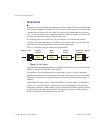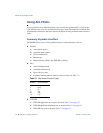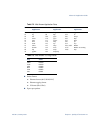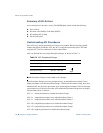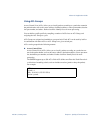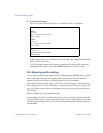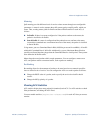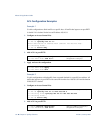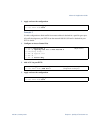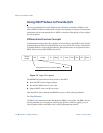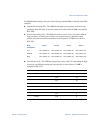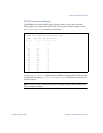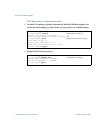Alteon OS Application Guide
Chapter 7: Quality of Service
13142C4911, January 2007
Metering
QoS metering provides different levels of service to data streams through user-configurable
parameters. A meter is used to measure the traffic stream against a traffic profile, which you
create. Thus, creating meters yields In-Profile and Out-of-Profile traffic for each ACL, as
follows:
In-Profile–If there is no meter configured or if the packet conforms to the meter, the
packet is classified as In-Profile.
Out-of-Profile–If a meter is configured and the packet does not conform to the meter
(exceeds the committed rate or maximum burst rate of the meter), the packet is classified
as Out-of-Profile.
Using meters, you set a Committed Rate in Kb/s (1000 bits per second in each Kb/s). All traffic
within this Committed Rate is In-Profile. Additionally, you set a Maximum Burst Size that
specifies an allowed data burst larger than the Committed Rate for a brief period. These param-
eters define the In-Profile traffic.
Meters keep the sorted packets within certain parameters. You can configure a meter on an
ACL, and perform actions on metered traffic, such as packet re-marking.
Re-Marking
Re-marking allows for the treatment of packets to be reset based on new network specifica-
tions or desired levels of service. You can configure the ACL to re-mark a packet as follows:
Change the DSCP value of a packet, used to specify the service level traffic should
receive.
Change the 802.1p priority of a packet.
Viewing ACL Statistics
ACL statistics display how many packets hit (matched) each ACL. Use ACL statistics to check
filter performance, and debug the ACL filters.
You must enable statistics (cfg/acl/acl x/stats ena) for each ACL that you want to
monitor.




